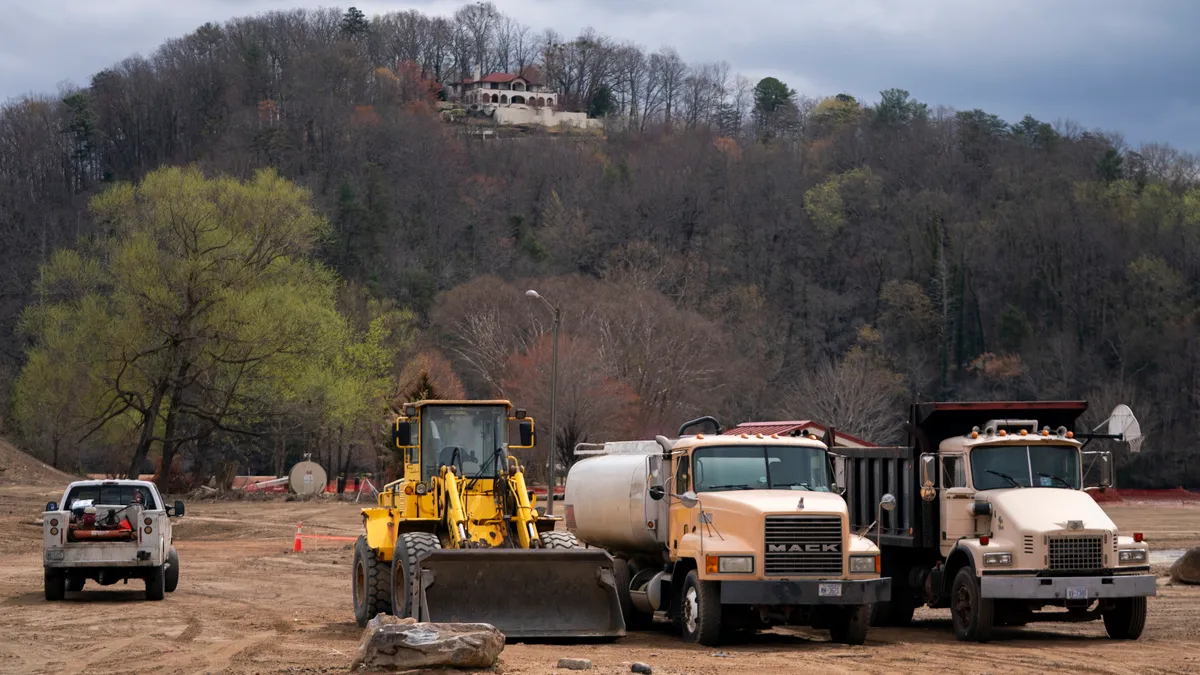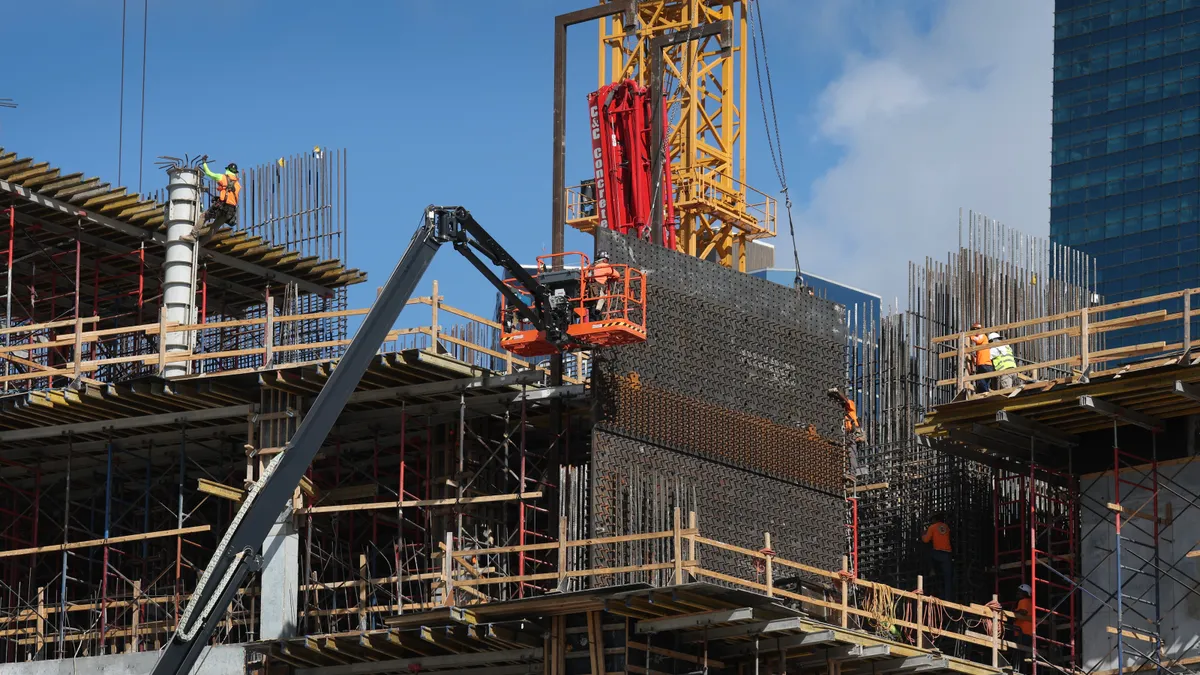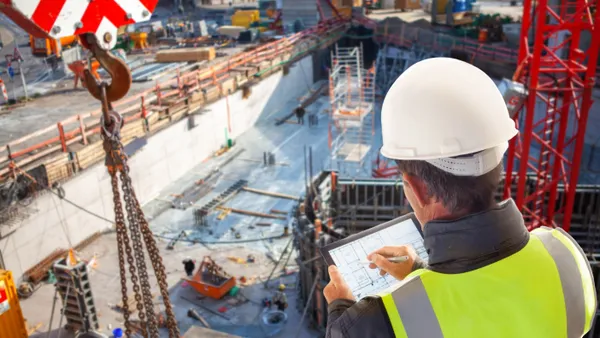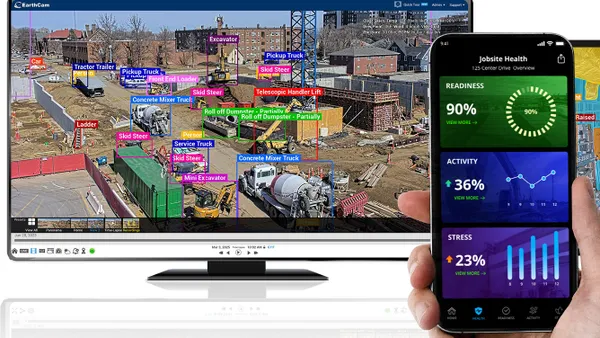Welcome to “Safe and Sound: Elevating the conversation around construction safety,” a podcast series focused on looking globally to help contractors create better safety standards locally.
In this series of podcasts, Construction Dive’s Brand Studio will explore how the latest technology systems provide a new level of transparency on the jobsite that’s helping to elevate conversations around safety. This series will also explore how clients are using this technology to create dramatically safer job sites — and improve bottom lines with fewer injuries and quality issues.
Check out the podcast episodes below.
⬆- Ep. 6 The Emerging Science of Construction Safety: Rethinking How We Measure Success
- Ep. 5 The Next Normal: 3 Safety Technology Tools Key to Post Pandemic Recovery
- Ep. 4 The New Normal: What Does Construction Safety Look Like Post Pandemic?
- Ep. 3 Global Construction Leadership During Coronavirus
- Ep. 2 Jobsite Safety and Technology During the Coronavirus Pandemic – What You Need to Know
- Ep. 1 What North American Companies Can Learn From Global Contractors to Improve Safety Standards Locally
Ep. 6
The Emerging Science of Construction Safety: Rethinking How We Measure Success
For years, construction has measured safety in much the same way: By counting the number of injuries. But with total costs of fatal and nonfatal injuries topping $11 billion annually, that’s clearly not working. Listen now as Brad Tabone speaks with Matt Hallowell, Executive Director of the Construction Safety Research Alliance (CSRA) and Professor of Construction Engineering, University of Colorado Boulder, as they discuss how new research is shattering traditional safety models — and lays a path for future construction safety measurement that’s based on observation rather than outcomes. Learn more about the Safety Classification and Learning (SCL) Model here.
Ep. 5
The Next Normal: 3 Safety Technology Tools Key to Post Pandemic Recovery
Contractors who are investing in the necessary solutions to keep job sites operating and workers safe are positioning themselves to not only recover from the consequences of the pandemic, but also to come out stronger on the other side. In this episode, host Brad Tabone explores three safety technology tools contractors need in the midst of recovery with the field operations manager at PCL Construction, Dean Xuereb.
Ep. 4
The New Normal: What Does Construction Safety Look Like Post Pandemic?
The coronavirus has changed how construction professionals view safety. HammerTech co-founder Brad Tabone and Caliber Safety founder Michael Fackler discuss how companies will need to evolve as they come out of the pandemic — and how they can better prepare for the next safety crisis.
Ep. 3
Global Construction Leadership During Coronavirus
Two company leaders from the U.S. and Australia discuss specific ways they’re using safety data and technology to lead their teams through the pandemic safely — and come out the other side stronger. Tune in for a worldwide perspective as HammerTech's Brad Tabone discusses how construction leadership can combat the pandemic with James Alexander from DPR Construction and Sal Palay from Kane Construction.
Ep. 2
Jobsite Safety and Technology During the Coronavirus Pandemic – What You Need to Know
Coronavirus has given jobsite safety a new meaning — and new ways to use technology data to maintain safety. Amid the pandemic, the best systems create transparency allowing executives, contractors and subs to work together to create safer workplaces. Join us as we bring back Brad Tabone with HammerTech to explore what he's seeing in the industry amongst this pandemic.
Ep. 1
What North American Companies Can Learn From Global Contractors to Improve Safety Standards Locally
In the first episode of our series, expert Brad Tabone with HammerTech shares his observations about how international companies are approaching safety differently than many North American companies. He’ll also share specific examples of how these companies are using the leading edge of safety technology to reduce risk, what the future of safety looks like from a regulatory and technological standpoint — and how companies can best capitalize on these trends today.









